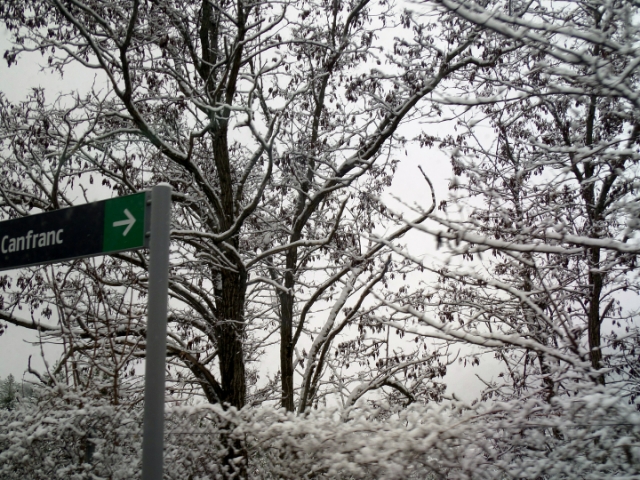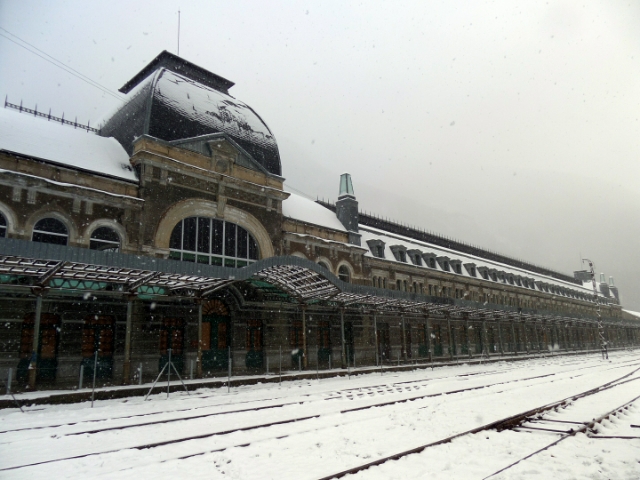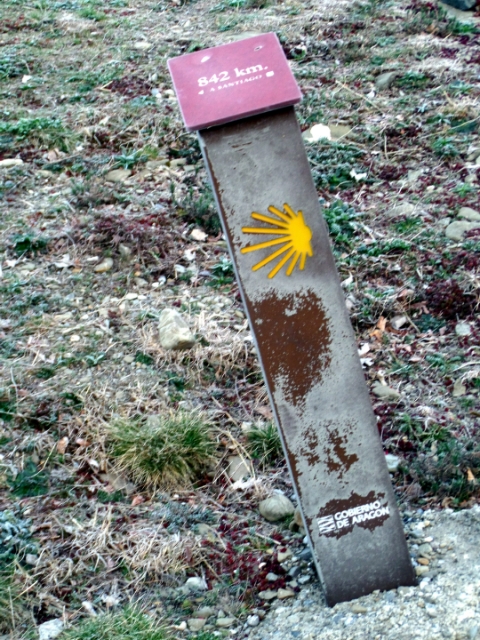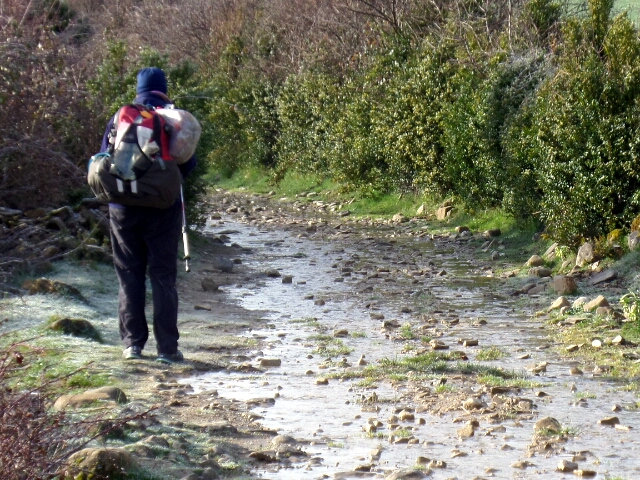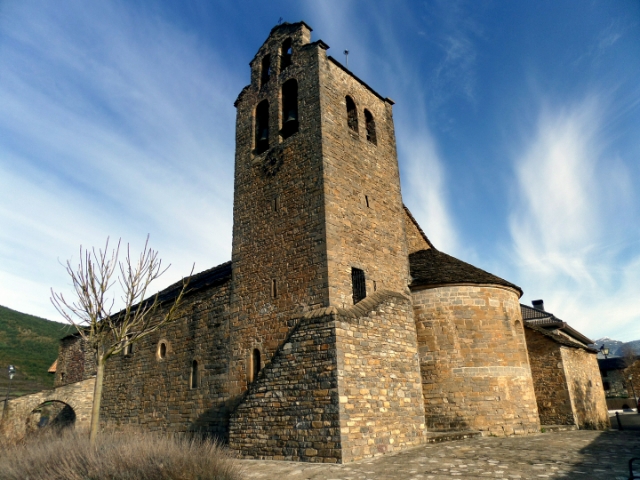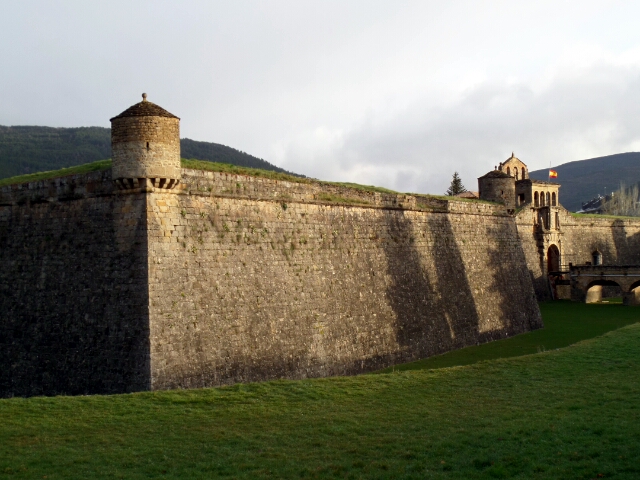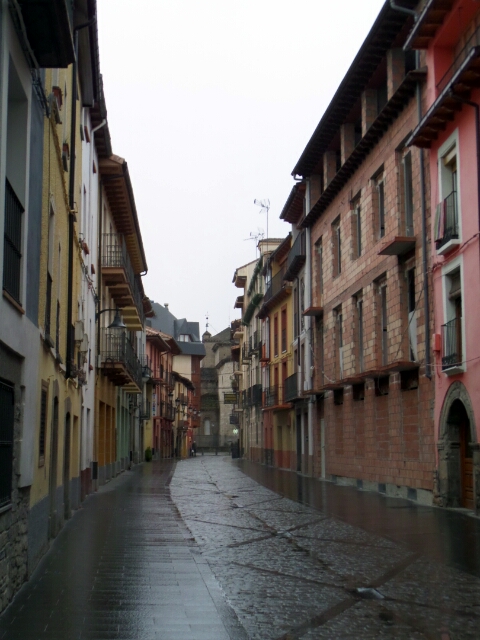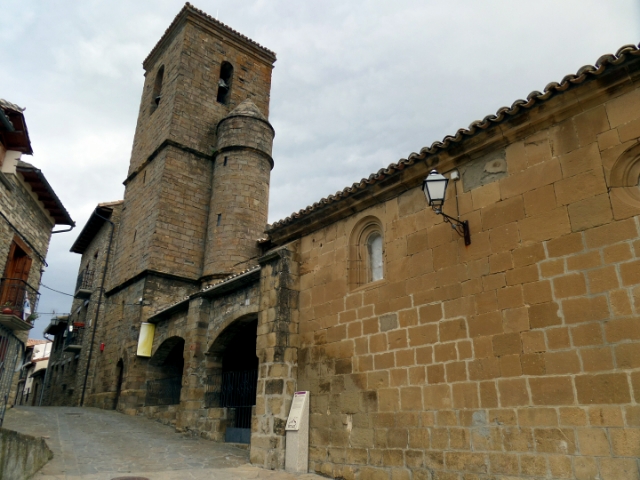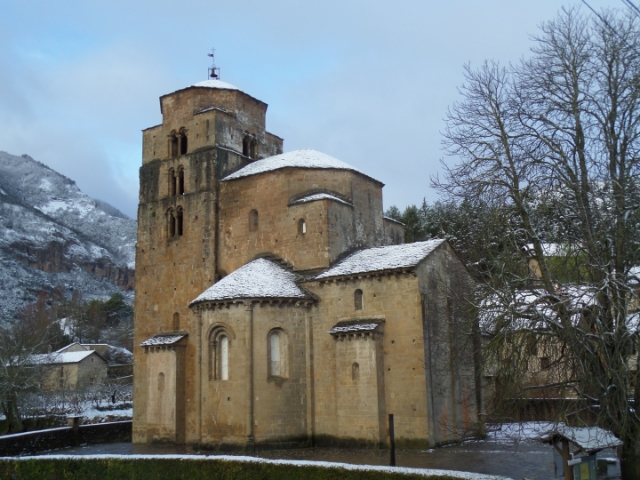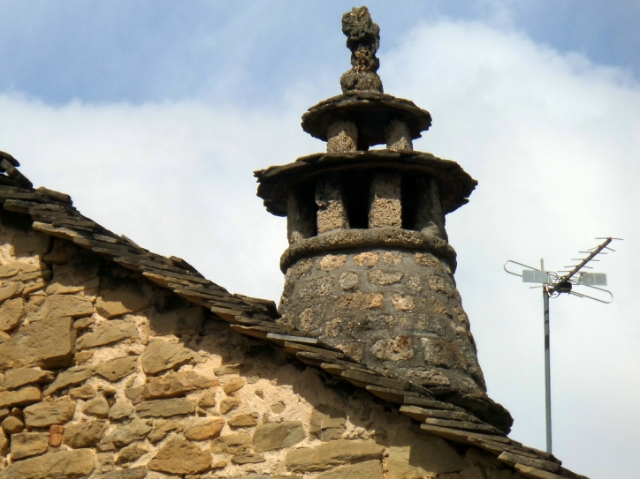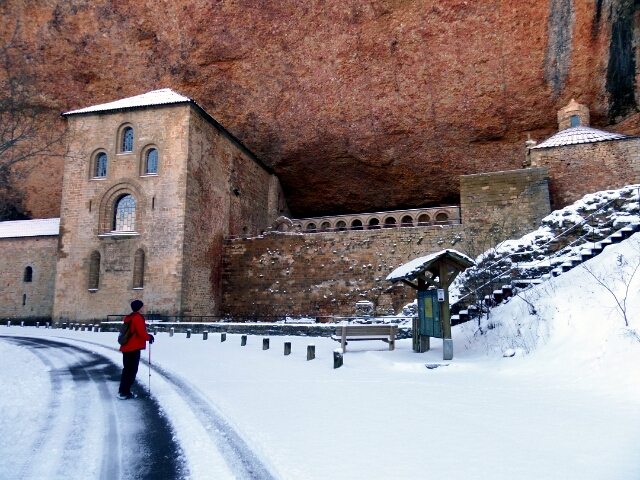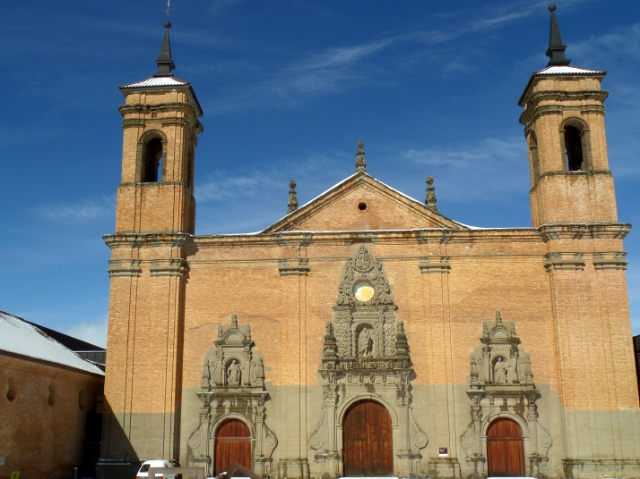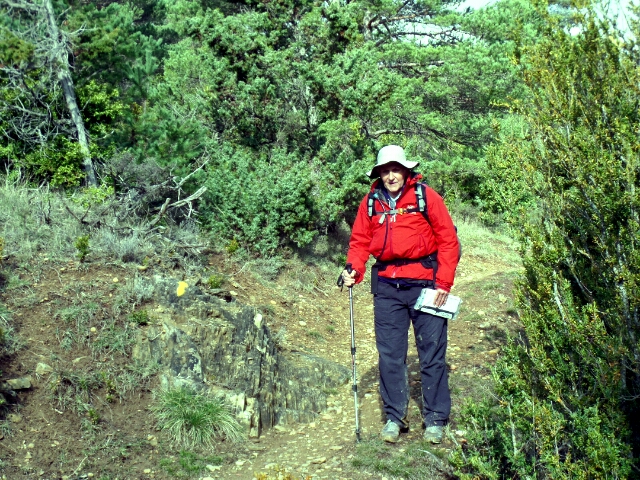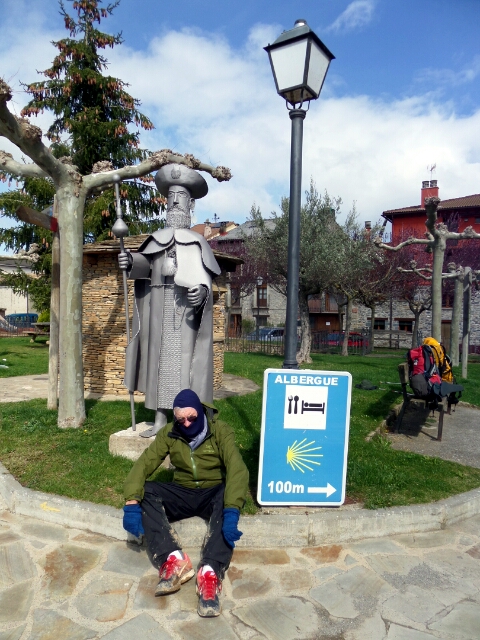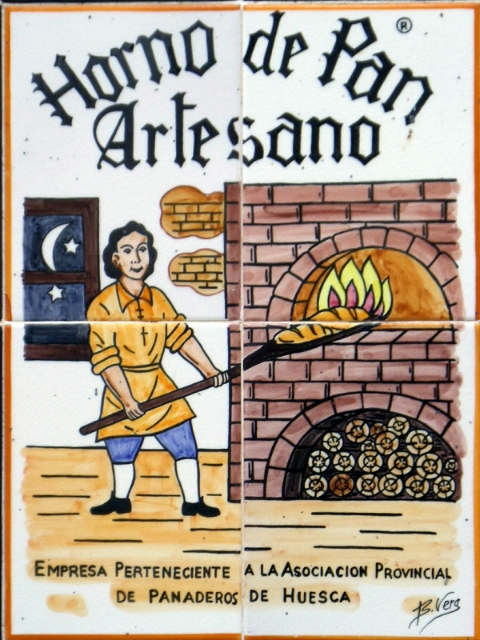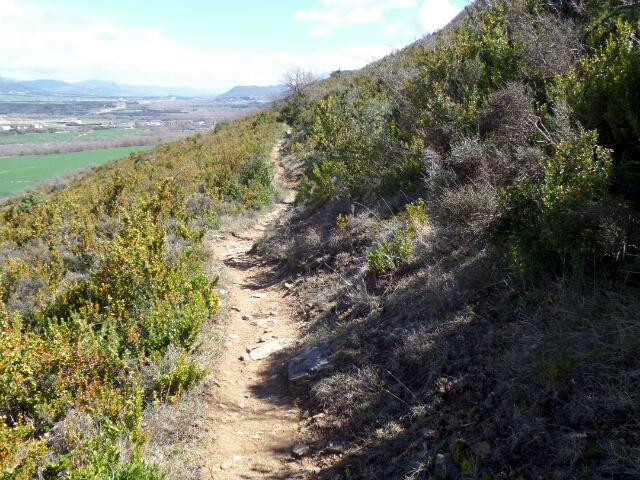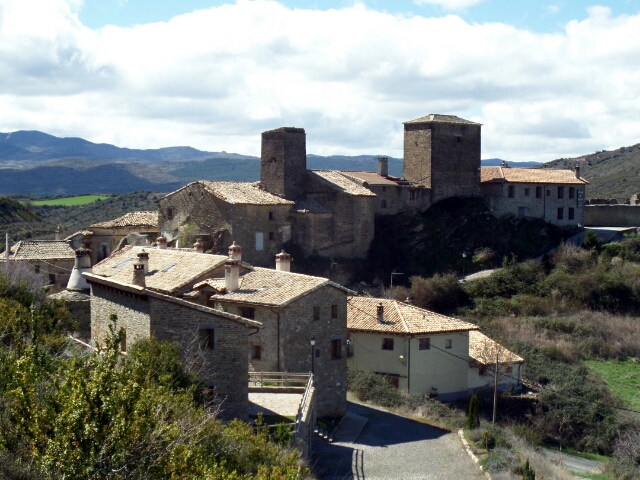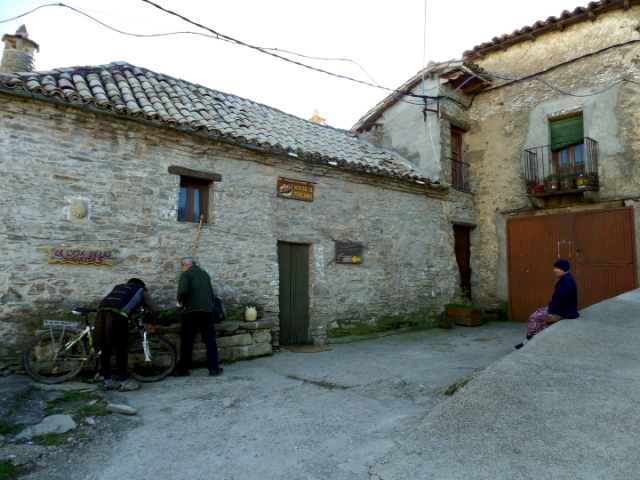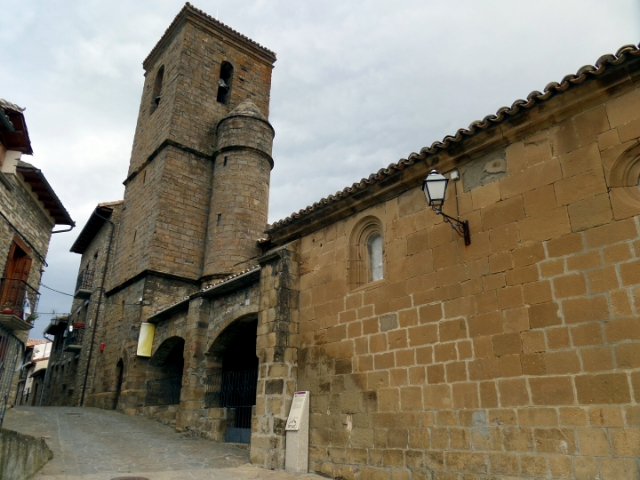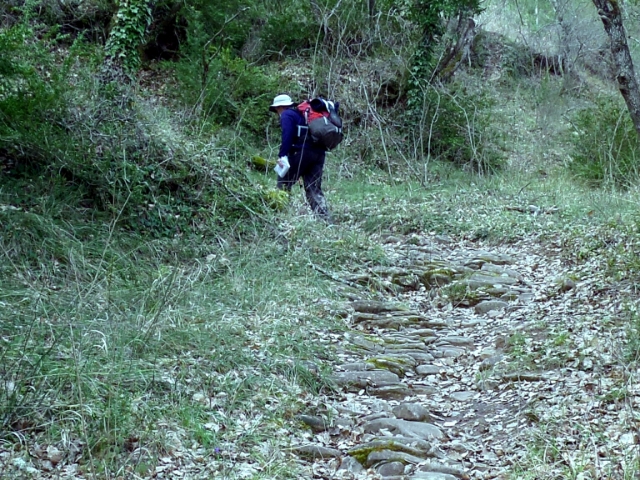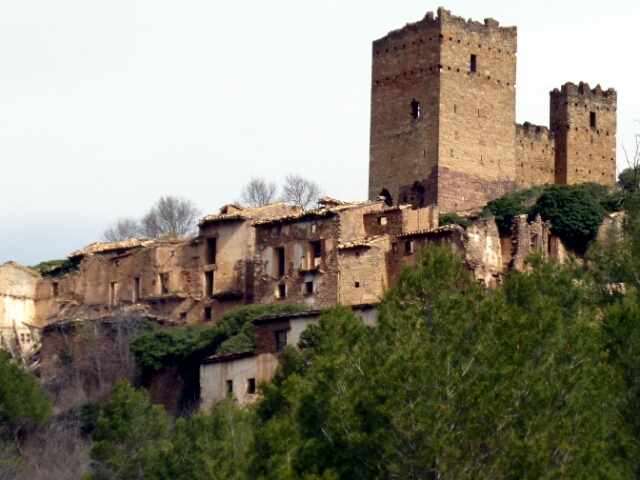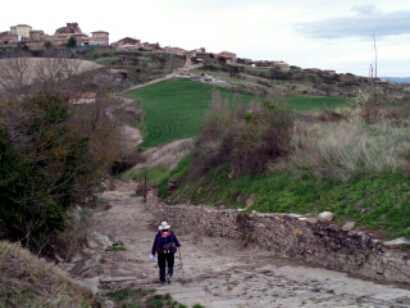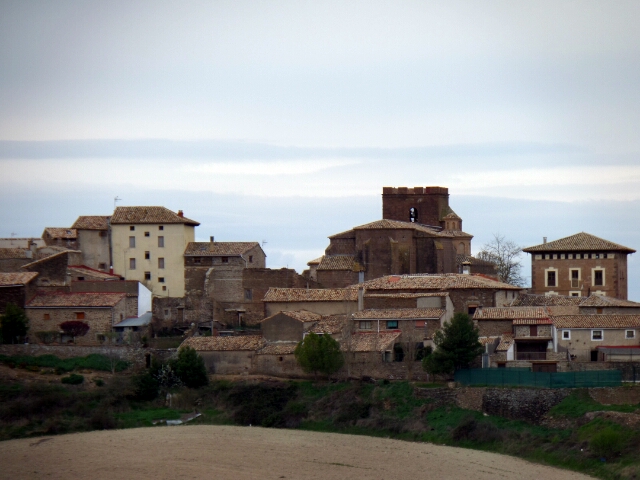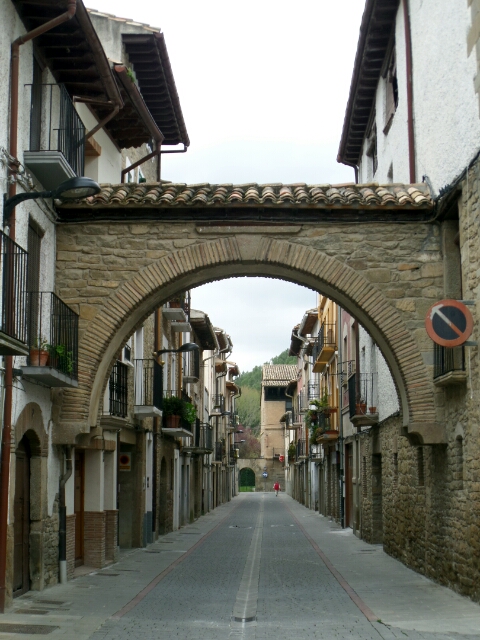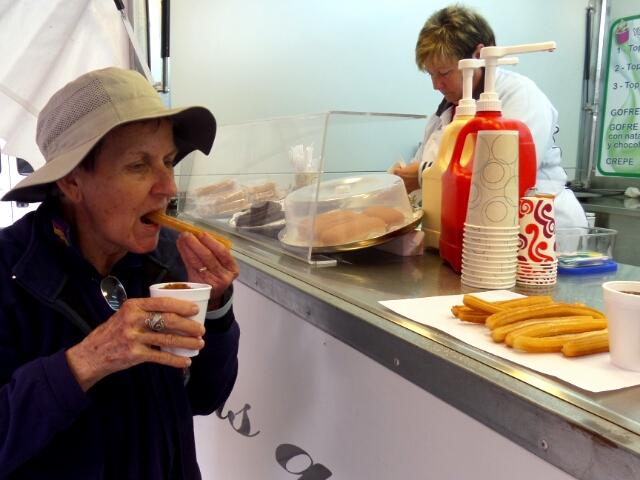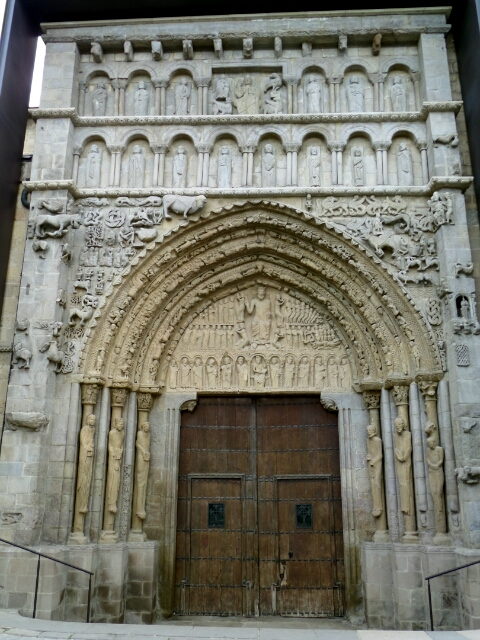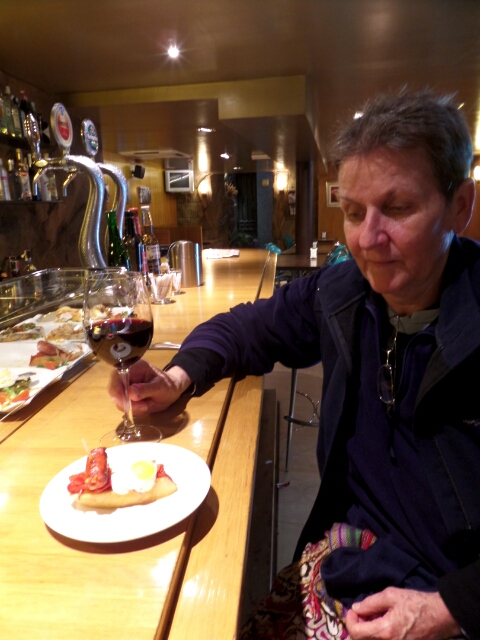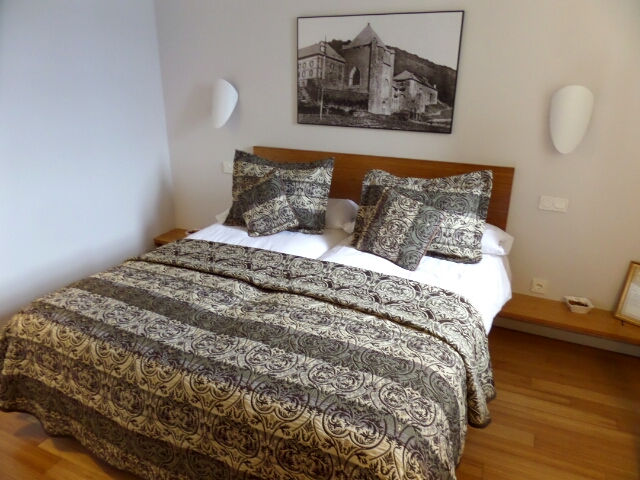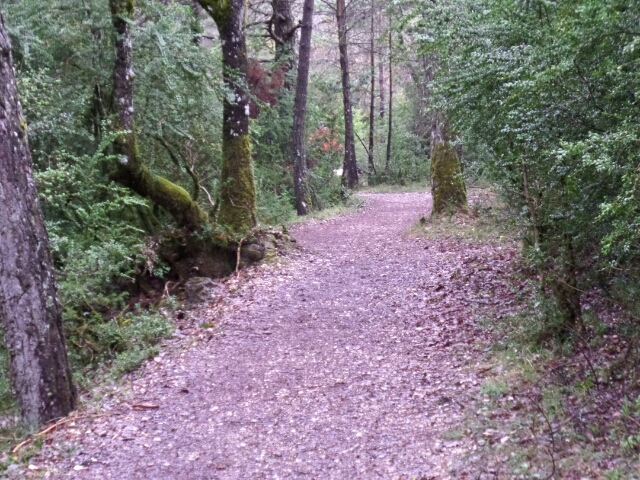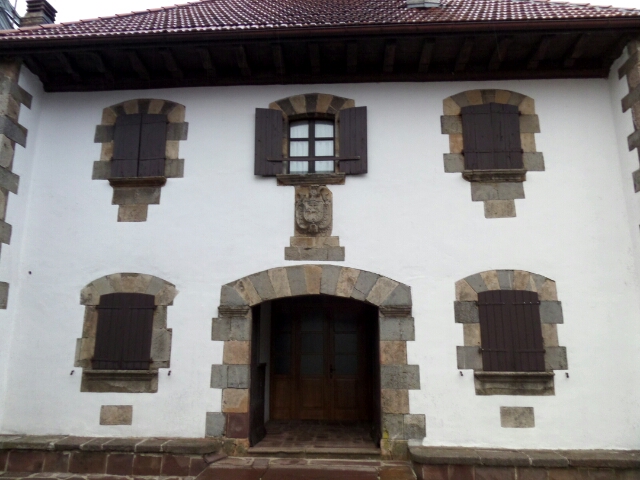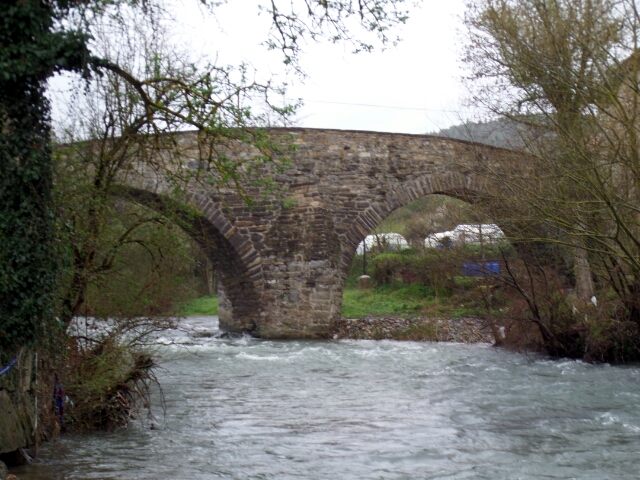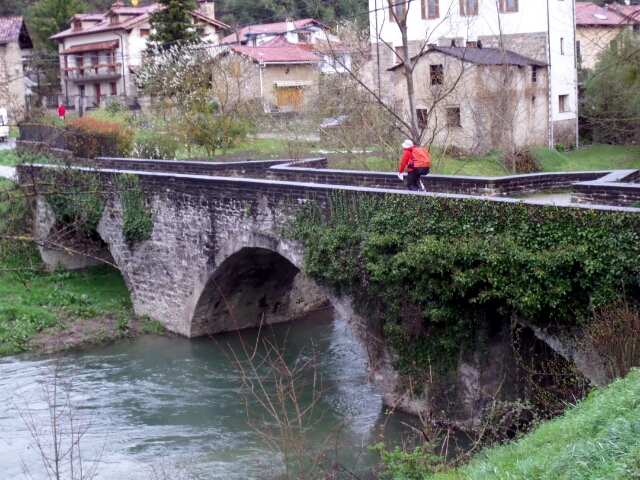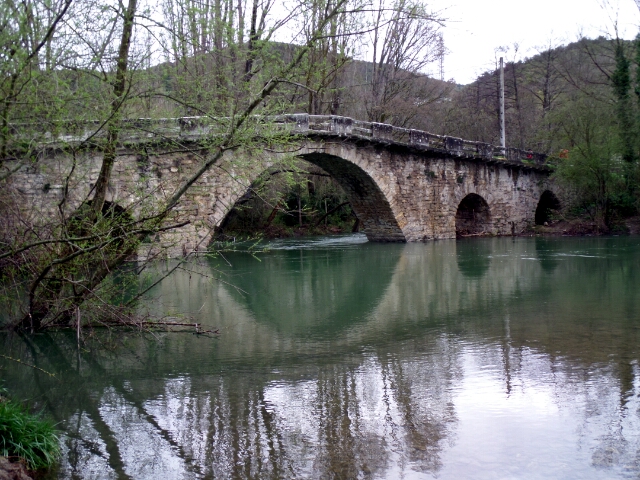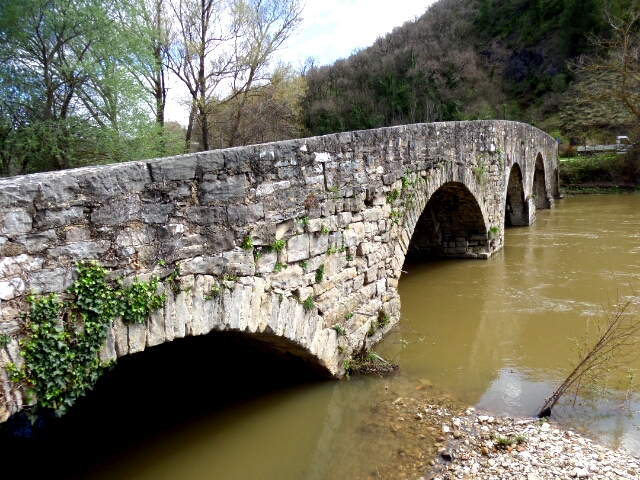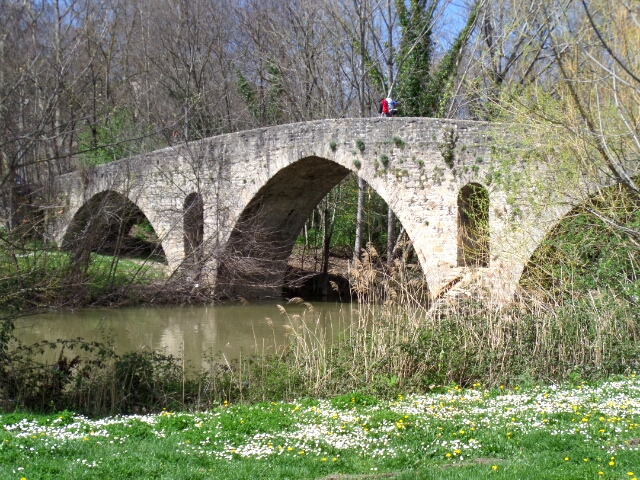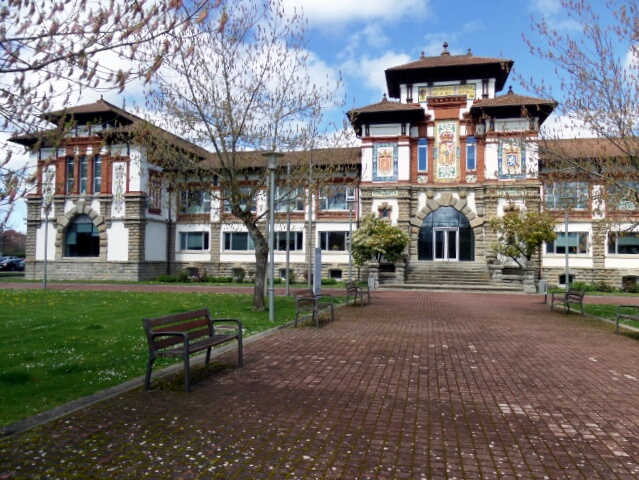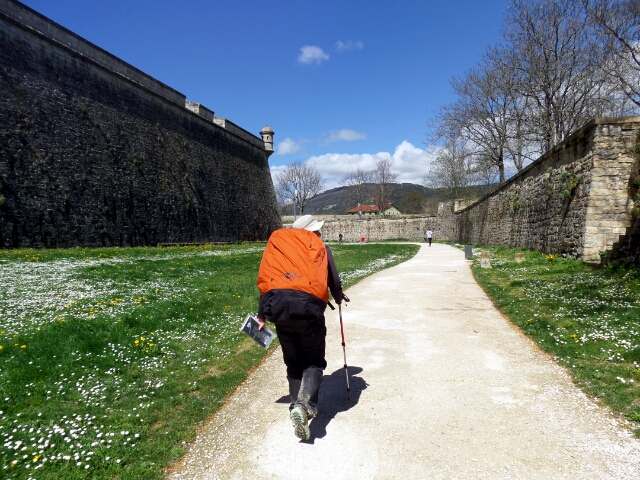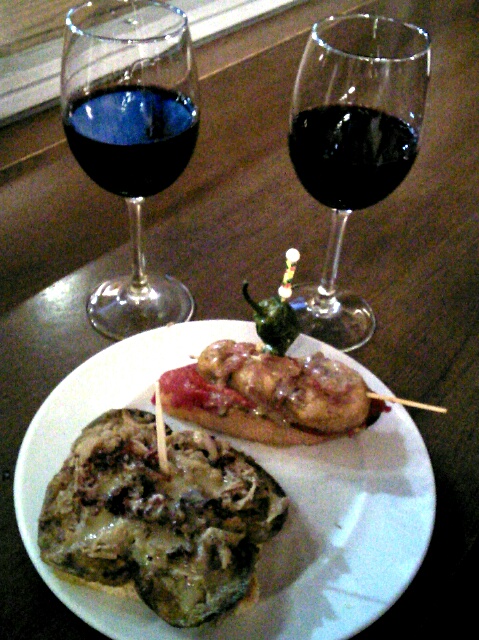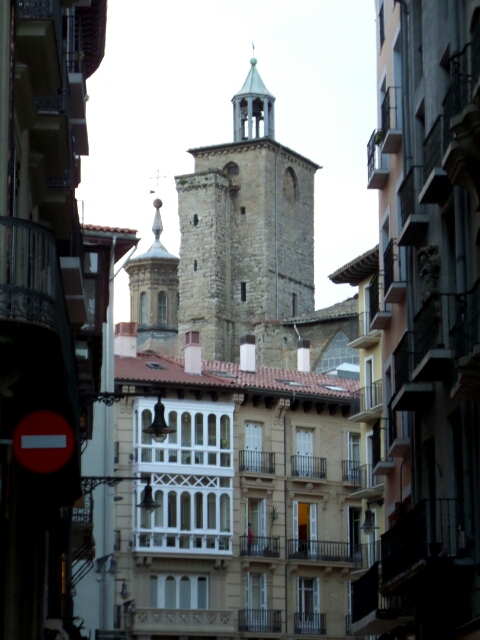Day 9 Mon 31 Mar
For the first time we left without wearing our GoreTex. The sun was out and soon we were warm enough to be out of our pullovers too. The 18 kilometers to Izco pleasant walking, although two long hills and some muddy patches slowed us down. There is no restaurant in Izco, but a small store in the Albergue had enough for us to cook our own. Just as we thought we had the place to ourselves, in came a Polish man who was walking the Way backwards to France. We shared our meal and he bought the wine, nice.
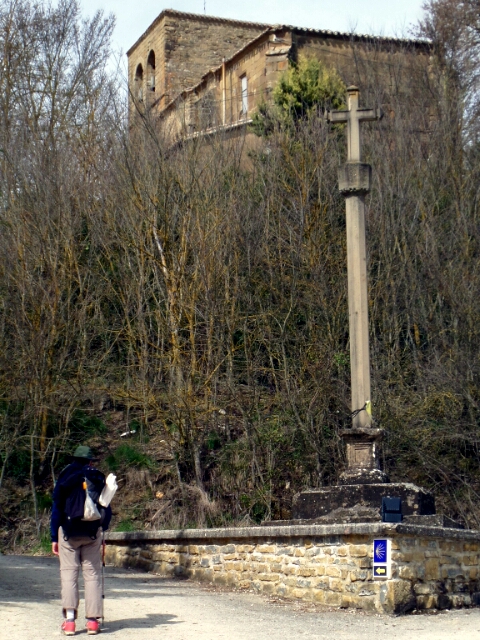
Crosses mark boundaries
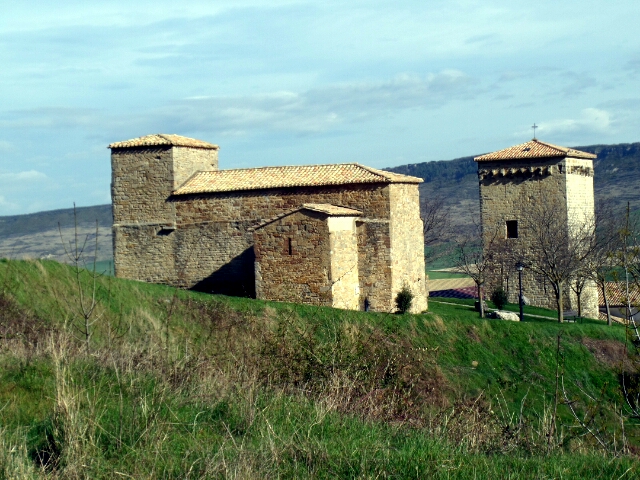
All that remains of a medieval fort near Izco
Day 10 Tue 01 Apr
Izco to Tiebas, 22 kilometers, passing thru Monreal. The day started out fine – the wildflowers, bright blue and yellow just starting to bloom. Then the rollercoaster on a rough track wore us out. We arrived in Tiebas exhausted, but got a room in a lovely Albergue with a view of Pamplona and had the best meal, typical Basque country style, in the bar across the road.
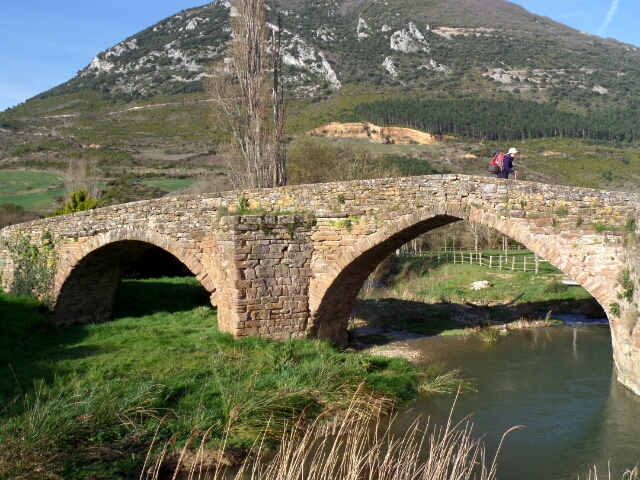
Crossing the medieval bridge into Monreal
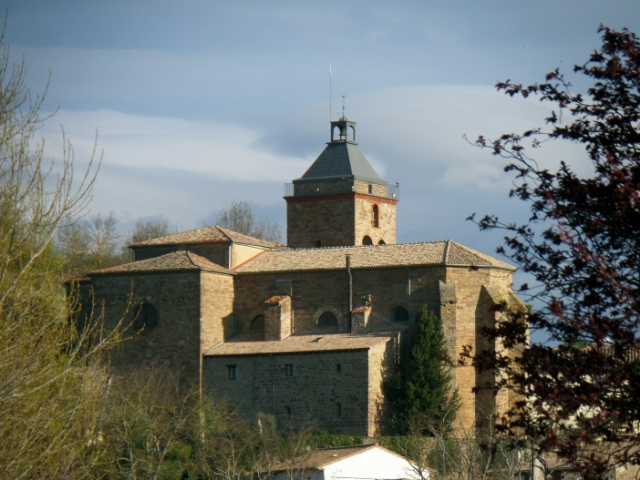
Monreal
Day 11Wed 02 Apr
From Tiebas, an easy 17 kilometers to Puente la Reina, easy because there were small villages every 30 minutes or so – time seems to go quicker. Stopping in a bar for a coffee, we saw the locals eating fried eggs and ham (with wine) so we had that too (without wine). We walked on, passing the mysterious Temple of Eunate, origin unknown, to arrive at Puente la Reina and after walking about 180 kilometers, the end of the Camino Aragonés.
Here we caught a bus to Pamplona and a taxi to Roncesvalles to start again on the Camino Francés.
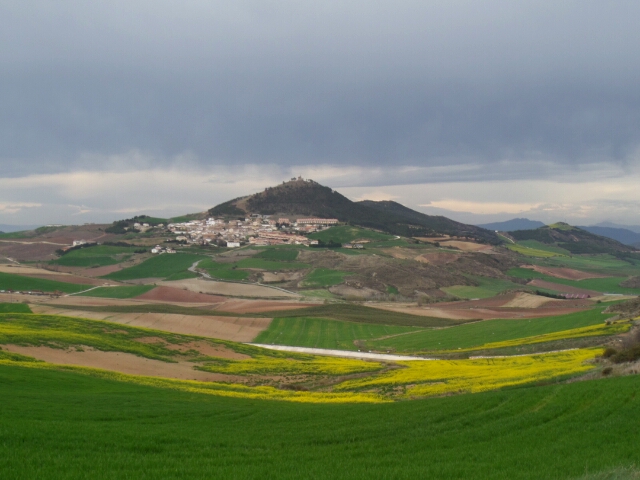
Lovely spring day walking to Puente la Reina
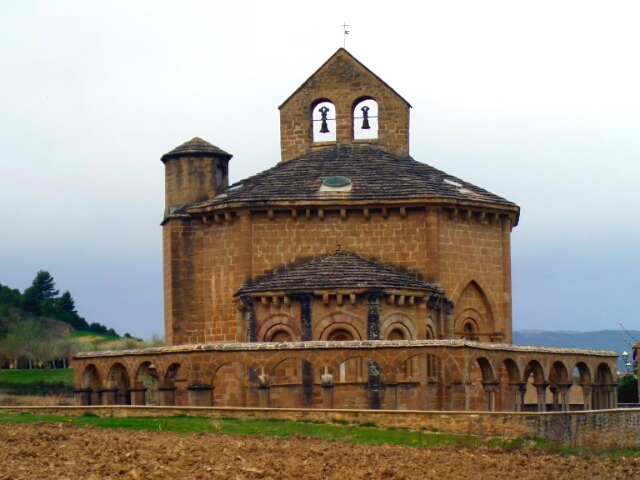
Mysterious temple at Eunate, origins unkown
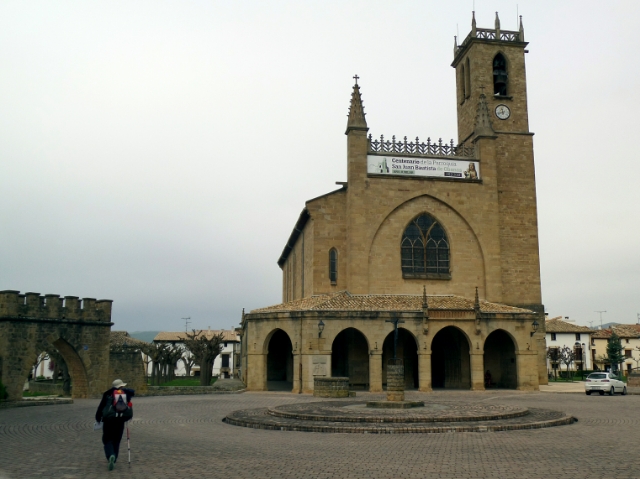
Óbanas, only 3 kilometers to go
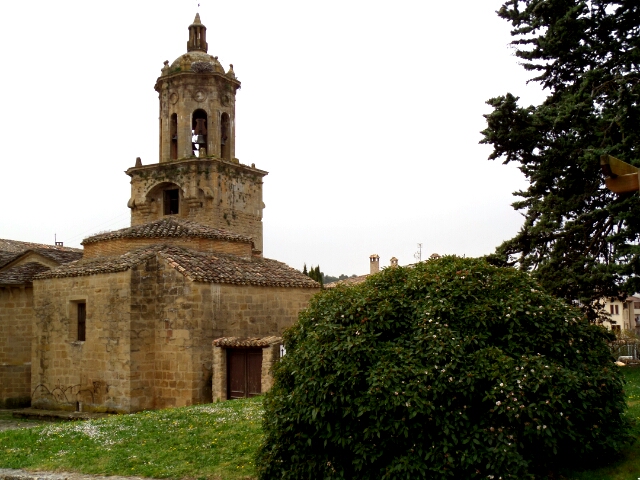
Arriving at Puente la Reina

